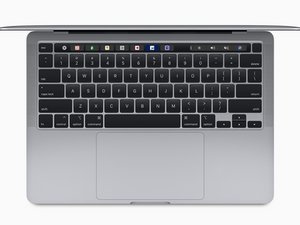Motherboard SMDs missing “tinned” side after water damage
There was minor corrosion on a late 2020 M1 MacBook Pro logic board caused by water.
Here’s the initial wide view of the corrosion:

I was able to get the MacBook the same day and clean up the corrosion that evening. It didn’t look too bad, but after putting the logic board back in and connecting the battery, the fan spun up a few times and now it’s unresponsive.
The owner did do all the wrong things such as trying to turn it back on and charging it after spilling a little water on it. Hopefully that isn’t what killed it for now. Most of the corrosion was around the USB C ports, so I cleaned those as well. (Now I’ll be replacing them to rule them out.)
Below are an couple pictures after cleaning with distilled water and alcohol and a horse hair brush. I didn’t try any ultrasonic cleaning yet. My main concern are two SMDs that appear to be missing their “tinned” contact on one side (left toward the large chip). Is that what it looks like from the picture and could that likely be the culprit or at least one of the issues? Would those SMDs have lost continuity with the logic board trace below? Here’s a couple pictures at 10x and 20x magnification:


(I haven’t tried the logic board in a different upper case to rule out the keyboard, etc causing start up issues because I don’t have one.)
Thanks for any suggestions!
Is this a good question?

 6
6  9
9  2
2 
